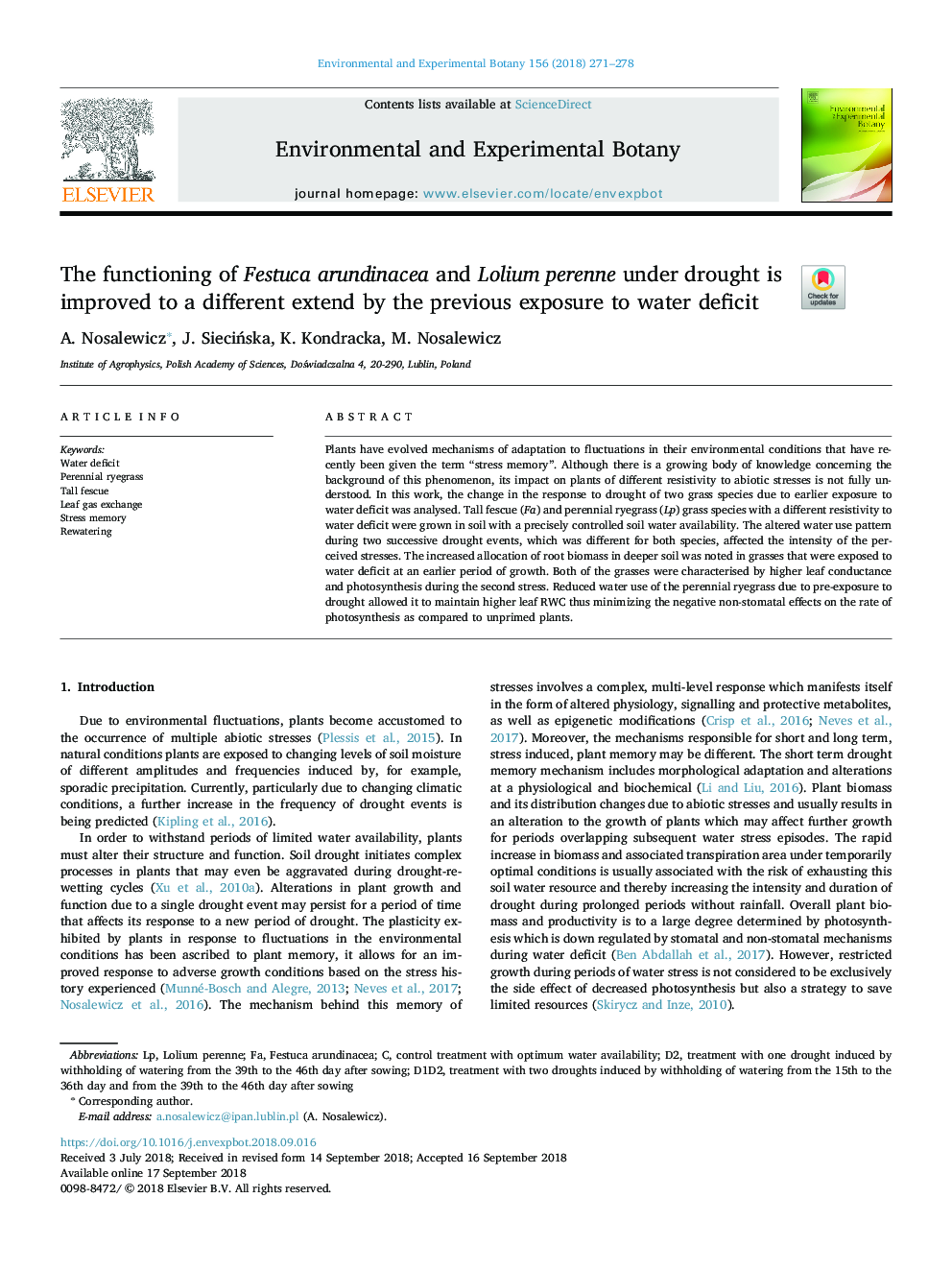| Article ID | Journal | Published Year | Pages | File Type |
|---|---|---|---|---|
| 11030375 | Environmental and Experimental Botany | 2018 | 8 Pages |
Abstract
Plants have evolved mechanisms of adaptation to fluctuations in their environmental conditions that have recently been given the term “stress memory”. Although there is a growing body of knowledge concerning the background of this phenomenon, its impact on plants of different resistivity to abiotic stresses is not fully understood. In this work, the change in the response to drought of two grass species due to earlier exposure to water deficit was analysed. Tall fescue (Fa) and perennial ryegrass (Lp) grass species with a different resistivity to water deficit were grown in soil with a precisely controlled soil water availability. The altered water use pattern during two successive drought events, which was different for both species, affected the intensity of the perceived stresses. The increased allocation of root biomass in deeper soil was noted in grasses that were exposed to water deficit at an earlier period of growth. Both of the grasses were characterised by higher leaf conductance and photosynthesis during the second stress. Reduced water use of the perennial ryegrass due to pre-exposure to drought allowed it to maintain higher leaf RWC thus minimizing the negative non-stomatal effects on the rate of photosynthesis as compared to unprimed plants.
Keywords
Related Topics
Life Sciences
Agricultural and Biological Sciences
Ecology, Evolution, Behavior and Systematics
Authors
A. Nosalewicz, J. SieciÅska, K. Kondracka, M. Nosalewicz,
